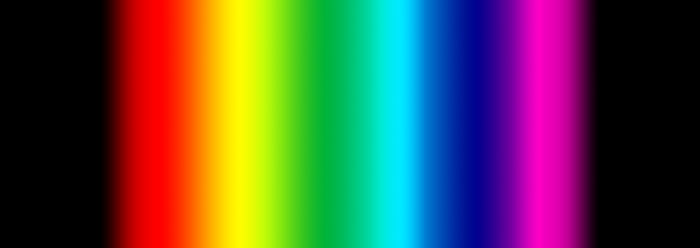
Elements Are Dependable across the Universe
The visible energy from the sun is the sunshine that lights the day and the moonlight reflected by the moon at night. The range of visible colors is a very small part of the electromagnetic spectrum. The range of visible light across the spectrum forms the colors we call a rainbow.
Chemicals give off and absorb light at specific points on the electromagnetic spectrum. By comparing the light from various chemicals with the light from our sun, we have learned that our sun is made up mostly of hydrogen. We have also learned which atoms are in galaxies far away. The chemical elements across the universe behave the same as they do for us.
The light from distant galaxies comes from explosions of hydrogen. These are nuclear explosions, which are much more powerful than chemical explosions.
Gravity draws all the sun's hydrogen together creating intense pressure. In the core of the sun the huge forces cause nuclear fusion reactions. Hydrogen atoms fuse together into helium and release huge amounts of energy. This explosive energy does not cause the sun to disintegrate and die, but the universal laws of physics keep the energy of the sun continually in balance.
The same laws of physics that hold our exploding sun together do the same for the stars that light up the night sky.
Processes today operate primarily within fixed natural laws and relatively uniform process rates, but since these laws were themselves originally created and are daily maintained by their Creator, there is always the possibility of miraculous intervention in these laws or processes by their Creator.



